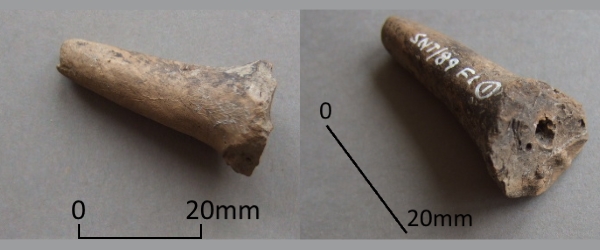
The image for VM_365 Day 190 shows two views of a small ceramic object, found in an excavation at St. Nicholas in Thanet, which has an interesting and perhaps unexpected origin.
The image on the right shows that the object is hollow, so likely to be some form of spout. At the bottom right of the flat end are four little ceramic pins, that were used to key the spout on to the body of a vessel .
The object can be identified from other examples as a spout from a baby feeding bottle, dating to the Mid Roman period, probably the later second century AD. Baby feeding bottles of many different shapes and forms are known from many periods in history. The spout would have been be attached to a small round-bodied pot, which was comfortable hold in the palm and fingers, probably with a flat base to allow it to put down to stand without spilling the contents.
This object is perhaps one of the most interesting examples of the way that humans have created objects to supplement or even replace natural processes. In this case the object may have been used in circumstances where perhaps natural feeding was not possible, extending the potential of a baby to survive and grow.
The pottery fabric suggests that the vessel may have been made by Romanised indigenous people, rather than by Roman Gauls or even Romans from Italy. Perhaps the pre-Roman people had their own ways to feed babies, but in this case they seem to have adopted Romanised version of the baby feeder.